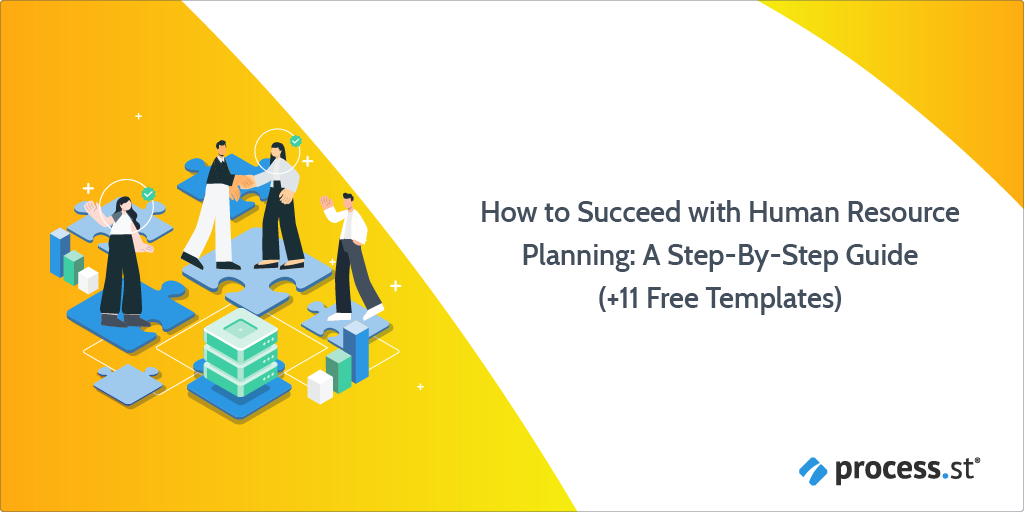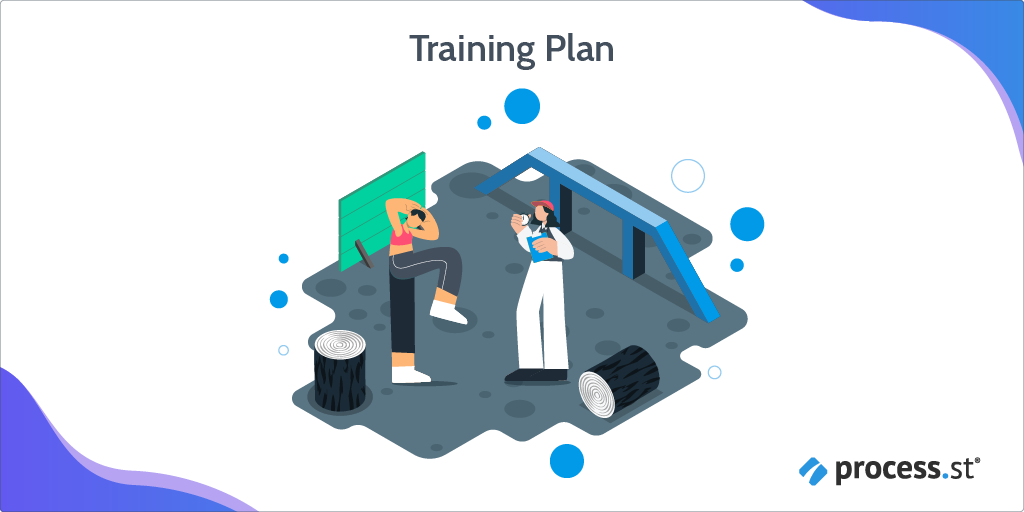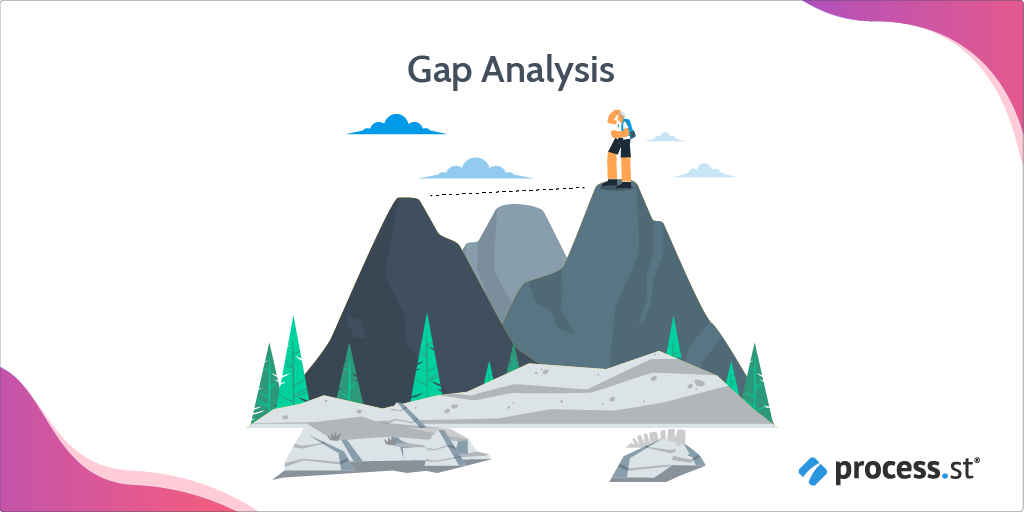“The term planning is imbecilic; everything can change tomorrow.“
That was a quote made by a French manager, straight after the 1973 oil crisis.
He’s right, of course. Everything can change tomorrow. We’re living in a world where we see changes every day. Ground-breaking technology, product innovations, and medical breakthroughs.
But does that mean “planning is imbecilic” though?
The truth is that planning can be ineffective and damaging if it’s done badly.
Good planning, on the other hand, can minimize the uncertainty brought on by change.
Don’t believe me?
Take the 1911 race to the South Pole, for example. The race was between two explorers: Roald Amundsen and Robert Falcon Scott. They each had a similar amount of experience and were the same age. Both faced 1,400 miles of gale-force winds, blizzards, and minus temperatures on their expeditions.
Amundsen meticulously planned his trip for several years. Scott didn’t.
Guess which expedition tragically failed?
Amundsen was already sailing back to Norway when Scott’s team finally gave up hope.
So, now we’ve established that planning is sensible, and not ‘imbecilic’, let’s find out why human resource planning is one of the most valuable processes a company can follow.
To do this, I’ll cover:
- What is human resource planning?
- Why is human resource planning important?
- The 7 steps of human resource planning
- How human resource planning is done
- Human resource planning in HRM
Let’s get on with helping you to plan for success!
What is human resource planning?
Corporate leaders often say employees are their most valuable asset. In fact, employees are so valuable that over 23% of businesses fail because they don’t have the right team.
That’s why investing in Human Resource Planning (HRP) is one of the most important decisions a company can make. It’s also why 80% of companies do HRP on a regular basis.
In simple terms, HRP is a process that manages employees within an organization.
No organization can afford the risk of a critical skills shortage and without HRP, companies face expensive losses. This can be seen with 90% of the UK’s larger organizations, which have all restructured in the last five years – nearly always involving job losses.
Why is human resource planning important?
“Human resource planning is the most important component of the entire human resource system.”
– Dr. Rajendra Mishra
We’ve established what human resource planning is, let’s talk about why it’s important.
The success of a business is directly linked to the performance of those who work for that business. It’s therefore critical to make sure that the business has the skills and competencies that it needs to succeed.
The quality of human resources in an organization is solely dependent on the success of human resource planning.
Look at Starbucks.
Starbucks has the lowest employee turnover rate among quick-service restaurants. Most quick-serve restaurants have between a 150 to 400% turnover rate. Starbucks’ rate is at 65%, and it’s all down to their human resources planning approach.
Not only will its low turnover rate positively affect the culture, motivation, and morale of its staff, but it will also massively help its profit margins.
On average, companies spend 33% of an employee’s annual salary to replace them when they leave.
The 7 steps of human resource planning
We know that human resource planning is a continuous process of planning ahead to make optimum use of an organization’s most valuable asset: its employees.
We also know that the process helps companies maintain a steady supply of skilled employees to meet their strategic objectives.
So we know what human resource planning is and why it’s important, now let’s look at how to do it.
There are seven steps to a good human resource planning process:
- Understand business goals
- Assess the current workforce
- Forecast demand
- Estimate gaps
- Formulate a plan
- Implement the plan
- Monitor the plan
Let’s dive into the detail of each step.
Step 1: Understand business goals
The first step in HRP involves analyzing the organizational strategy, goals, and objectives.
It’s important to understand where the organization wants to go and how it wants to get there so that HR practices can be aligned with the company’s strategic objectives.
Step 2: Assess the current workforce
The next step is to take stock of the current employees in the organization to see if they fit the organizational needs.
The inventory of current employees should capture data concerning ages, locations, capabilities, and skills. This will determine what jobs are required and if you can use internal candidates or if you need to look elsewhere.
Step 3: Forecast demand
The third step in the process is to forecast future staffing needs based on the company goals.
This process will establish if the company needs to grow its workforce, or if it can improve its current staff through training.
Step 4: Estimate gaps
Once the future resource needs and the current capability of the workforce have been identified, step four requires you to highlight the gaps between the two.
These questions will help you find out where the gaps are:
- Do you foresee a skill shortage in a specific occupational group?
- Will changes in program delivery require the acquisition of new skills?
- Do you have succession plans for critical positions?
- Have you conducted a risk analysis of the elements of the scan critical to the success of your organization?
Step 5: Formulate a plan
Step 5 is all about formulating a plan to close the gaps you found in step 4.
The plan should identify the skill shortages and surpluses within the company. It should determine HR priorities and list actions to be taken around recruitment, training, internal role transitions, retirements, and lay-offs.
Step 6: Implement the plan
This step involves integrating the HR plan into the company. It will require support from different departments and teams.
Step 7: Monitor the plan
This step often gets missed, but is a fundamental part of the HR planning process.
Ongoing measurement, reporting, and continuous improvement will keep the company moving toward its strategic goals. If everything is running smoothly, continue with the plan. If there are roadblocks, change the plan to suit your company’s needs.
And there you have it. Seven steps to the efficient management of human resources in an organization.
How human resource planning is done
Lucky for you, this isn’t where your human resource planning journey ends.
Process Street has created eleven super-powered checklists to help you with your human resource planning:
These templates will enable you to:
- Analyze your current workforce;
- Establish future workforce requirements;
- Formulate, implement, and monitor a formidable human resource plan.
Use the following Process Street templates to really smash your human resource planning!
Training plan
The training plan aims to improve workforce competency to increase productivity and reach organizational goals. Preparing an annual, company-wide training plan is a detailed and complex process.
Our training plan template will make it easy for you. It will identify who needs to be trained, when they should be trained, and what they need to be trained in. It also ensures alignment with your organizational goals.
Click here to access our training plan template!
Employee evaluation form
Employee evaluations exist to make sure there is clear communication between employers and employees about performance levels. The process boosts morale and identifies areas of weakness. These can inform your HR strategy, gap analysis, and training plans.
Use this employee evaluation form to:
- Capture performance metrics;
- Analyze your workforce;
- Make decisions about what future resources are needed.
Click here to access our employee evaluation form!
Performance review
We also have this performance review template which you can use as an alternative.
Click here to access this performance review template!
Employee transition plan
This process is for the HR team to ensure that a transitioning employee moves into their new role, smoothly and at a minimal cost to the business. It’s important the employee, their current line manager and their new line manager are all clear about the transition arrangements.
Our employee transition plan will provide guidance on handover and orientation tasks. It will also minimize disruption and uncertainty for employees affected by the change.
Click here to access our employee transition plan!
Gap analysis
Gap analysis involves you considering current skills in your workforce. As times change, skills will change to suit the modern business market. The below template gives you the foresight to keep your team and company up to date with current skill trends.
Use this gap analysis template to help your organization plan for growth. Use it to project the hiring needs for your future workforce. It can also help you to understand the skills and experience of your current workforce. You can also use it to develop strategies for overcoming the gap between the two.
Click here to access our gap analysis template!
HR strategic plan
An HR strategic plan is a tool to help businesses align their HR capabilities with their organizational goals. It establishes how human resources can make a direct impact on a company’s growth.
Our HR strategic plan will assess the needs of your organization. It can help to determine appropriate initiatives for the HR department to pursue and support the business in meeting its goals.
Click here to access our HR strategic plan!
Employee satisfaction
An employee satisfaction survey is intended to understand how employees are feeling about the company.
Our employee satisfaction survey will help you understand the current dynamics of the workplace. Once completed, it will identify areas within the business that need to be improved to keep your employees satisfied.
Click here to access our employee satisfaction survey!
Workforce planning template
Workforce planning ensures that a business has the right staff in place with the right skill sets.
Our workforce planning template will highlight areas within the workforce that need attention.
Click here to access our workforce planning template!
Employee development plan template
The employee development plan template will help your employees improve in their current job. It will also help them acquire knowledge and skills for new roles and responsibilities within the organization.
Click here to access our employee development plan template!
HIPAA compliance checklist for HR
HIPAA is a series of regulatory standards that health care organizations must implement in their business to protect the privacy, security, and integrity of protected health information.
The compliance program that healthcare organizations need to follow is complicated and can take a long time to complete. Use our HIPAA compliance checklist for HR to make sure you don’t miss any vital steps.
Click here to access our HIPAA compliance checklist for HR!
You can also use this HIPAA compliance checklist, which is specifically for hospitals.
Run this checklist to determine how compliant your hospital is with HIPAA standards and regulations.
Click here to access our HIPAA compliance checklist!
Vacation request form
Our vacation request form is designed to make sure that the company doesn’t suffer as a result of the employee’s holiday.
Using this checklist, a line manager can approve or reject a holiday request and HR can keep track of the number of holiday days an employee has taken.
Click here to access our vacation request form!
Or, try this other holiday leave application form.
Click here to access our holiday leave application form!
Business needs assessment checklist
Use our business needs assessment checklist to:
- Determine priorities;
- Make improvements;
- Allocate resources.
Click here to access our business needs assessment checklist!
Human resource planning in HRM
So you’ve done your HR planning, now you need to put your plans into action.
We have thousands of HR-related articles and functional checklists to help you implement your HR plans. From refining recruitment processes, and interview techniques, building a strong work culture, and improving employee engagement.
Take a look at this list of insightful gems:
- The Essential Processes Your HR Team Needs Today (+60 Free Templates)
- 12 HR Management Tips to Run an Effective Business (and Prevent Total Chaos)
- A Beginner’s Guide to Setting up HR Software in the Cloud
- How to Choose the Best HRIS (Human Resources Information System)
- Why HRMS is Becoming a Must-Have & How to Get Started
And there we have it. Your complete guide to planning for success with human resource planning!
We’d love to hear what you think about human resource planning in the comments. Who knows? You may even get featured in an upcoming article!












Amanda Greenwood
Amanda is a content writer for Process Street. Her main mission in life is to write content that makes business processes fun, interesting, and easy to understand. Her background is in marketing and project management, so she has a wealth of experience to draw from, which adds a touch of reality and a whole heap of depth to the content she writes.